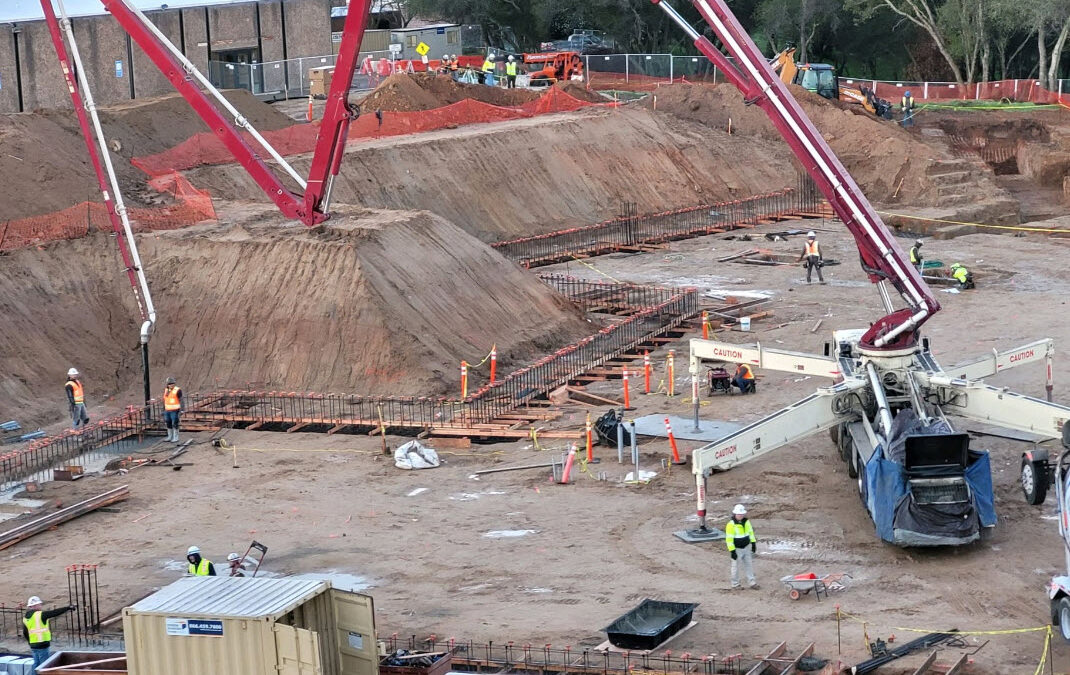While we’re thankful to be in the middle of summer, hot weather can create problems in the mixing, placing, and curing of concrete. In terms of concrete placement, hot weather is defined as any period of high temperature in which special precautions need to be taken to ensure proper handling, placing, finishing and curing of concrete.
These special precautions need to be taken due to the potential effects on fresh and recently placed concrete. High temperatures alone can cause increased water demand, accelerated slump loss, and have a major effect on set time.
High temperature, in addition to high wind velocity and low humidity, can affect fresh concrete in these two important ways:
- The high rate of evaporation may induce early plastic shrinkage cracks or drying shrinkage cracks
- The high evaporation rate can remove surface water necessary for hydration unless proper curing methods are employed
Fortunately, there are steps we can take to prevent and minimize these potential adverse effects.
Rules for Hot Weather Concrete Placement:
- Modify concrete mix designs as appropriate
- Introduce the use of set time retarders such as Delvo
- Moderate the heat of hydration by reducing cement content with the use of pozzolans (fly ash)
- Incorporate chilled water or ice as part of the mixing water
- Have adequate personnel to quickly place, finish, and cure concrete
- Limit the addition of water at the job site (only add water on arrival at the job site to adjust the slump)
- Dampen the subgrade, as well as forms and reinforcement, prior to the concrete placement
- Do not allow excessive water to pond
- Begin final finish as soon as the water sheen has left the surface
- Start curing as soon as finishing is complete and continue the curing for at least 3 days
- Cover the concrete with wet burlap and plastic sheeting or use a liquid membrane curing compound to prevent evaporation
- If low humidity and high winds are predicted, an evaporation retardant is suggested to avoid plastic shrinkage cracking in slabs
As with most construction, weather is a huge consideration. Maintaining an appropriate level of moisture in the concrete is the highest priority. “Hot weather” concrete placement can be difficult because of a combination of factors, but with the right steps in place you can be successful.
Are you planning a project that includes concrete placement in high temperatures? Do you have more questions on the process? How can we help? Contact us today! (775) 900-2939


Recent Comments